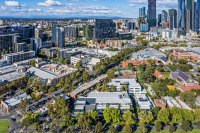
The need for social and affordable housing in Australia is critical. Although the federal government aims to deliver up to 40,000 new social and affordable homes over 5 years, and state governments are adding their own targets, this is far from enough to meet the needs of vulnerable and low-income Australians as demand surges to a projected 700,000 extra social and affordable homes needed by 2036.
By scaling up and partnering with governments and the private sector, not-for-profit community housing providers (CHPs) can play a significant role in boosting supply. Many CHPs will already have a deep understanding of community needs as well as the ongoing maintenance and management challenges in this housing sector. These factors, coupled with getting the costs and quality right, are key to achieving rapid, sustainable outcomes for the sector and helping the rising numbers of Australians in need.
Start with the tenant, not the CAPEX
As for any other product or project, upfront capital investment can be squandered if you don’t fully understand who you’re designing for. Each project will be different because each community is different. What might work when replacing a high-rise tower in inner-city Melbourne will differ from a new development in Queensland, where more space is available for lower-rise developments but where essential services, amenities and community supports may not yet be in place. It’s critical to understand what is important to the resident, not only from the perspective of the building form, but also in terms of the supporting infrastructure and services needed to build healthy, thriving communities. To create really successful and sustainable social and affordable housing, buildings are only part of the picture.
Although the success of social and affordable housing investments is unlikely to ever be measured in purely monetary outcomes, achieving a healthy bottom line can strengthen the operation and secure its future. Getting the CAPEX spend down to an appropriate level is key, but cheap can’t come at the expense of long-term durability and fitness-for-purpose – otherwise there’s a real risk of entrenching disadvantage.
Design for flexibility, futureproofing and long-term sustainability
Innovation, flexibility and good planning can deliver greater value – both economically and socially – from the property over its life. An effective way to keep costs down is through flexible space planning. Bedrooms are cheaper than bathrooms and kitchens, but a family’s needs change throughout life. Consider how a 2- or 3- or 4-bedroom dwelling could be reconfigured efficiently in future as the need for bedrooms reduces. Drawing up the alternative designs now and putting in the necessary groundwork for the alternatives – such as the slab penetrations and plumbing to accommodate an extra bathroom or kitchen – adds extra cost upfront but could save money over the asset’s life cycle.
Another consideration is whether some features could be staged. For example, does every car park need an EV charger immediately, or could chargers be increased incrementally as demand patterns evolve? Ringfence the money now, so the need can be met when the time is right.
With energy a major cost pressure for low-income Australians, social and affordable housing must prioritise energy efficiency. Façade choices can play a significant role here, and designing for all-electric is a must. Investing in on-site renewable energy generation and storage could be a smart long-term strategy, reducing reliance on the grid and residents’ exposure to price volatility. To further bolster environmental sustainability, explore opportunities to lower the embodied carbon footprint of the development – which may attract government support for green housing initiatives.
Pragmatic considerations for future maintenance
Maintenance can’t be an afterthought. At the design stage, carefully consider the practicality and costs of ongoing maintenance. Choices about glazing and cladding can have significant cost implications down the track – such as for window cleaning or repainting – so the right balance is needed between aesthetics, practicality and cost in design choices.
This is also true for services design. Consider whether it is preferable to have centralised heating and cooling accessed through a plant room, or individual systems that require maintenance access to each unit – or are run to fail. Individual rather than centralised metering is great for sustainability monitoring, but meters cost money and have a limited life.
Leverage modular design, prefabrication and digital advances
Using modular or prefabricated building techniques can be a gamechanger, reducing construction time and costs, achieving economies of scale, and delivering consistent quality. Manufacturing off-site can be particularly advantageous for projects located outside urban centres, in areas where labour and skills are in short supply, or where weather is capricious.
Building Information Modelling (BIM) and digital project management tools are powerful levers for optimising design and construction, with significant potential to reduce errors, delays and costs. Investing in BIM early will deliver benefits during design and construction, but will reveal its full power over time by revolutionising facilities management and asset management.
Develop a clear, fit-for-purpose brief
One of the most critical elements for success is how the project brief is written. If it’s unclear or ambiguous, tenderers will add extra contingency to mitigate risk – pushing up the price. Partnering with experienced, independent technical and commercial advisors will help clarify and articulate the project’s intent and requirements, identify opportunities for achieving economies of scale and value for money across construction and long-term operations, and smooth the path to faster, better outcomes – and much-needed roofs over the heads of more Australians.
About the authors
Adam Adkin is a State Director at WT, based in Brisbane. Adam leads our Technical Advisory services, which includes Lenders Technical Advisory for Public Private Partnerships (PPP), Purpose Built Student Accommodation (PBSA) projects, and recent Homes Victoria (VIC) and Housing Infrastructure Fund (QLD) projects. Adam brings extensive experience in matters relating to D&C cost, program, operations, maintenance and lifecycle of these facilities, with a key focus on strategy and performance management. A published authority on Asset Data Capture and Asset Management Principles, Adam applies his advanced technical and personal skills to successfully advise WT’s many clients across varied sectors and widely diverse projects in the construction and engineering industries.
Fraser Main is a Principal at WT, based in Melbourne. He brings over 30 years of local and international advisory and operational experience in housing including suburban dwellings, apartments, aged care and retirement, student accommodation and government housing. Fraser has also acted for private sector and government clients developing and operating housing and social infrastructure and has seen first-hand the challenges the sector faces in creating supply and the impact this has on Australia’s social fabric and community. His expertise spans superintendent services, procurement and project delivery and asset and facility management.






